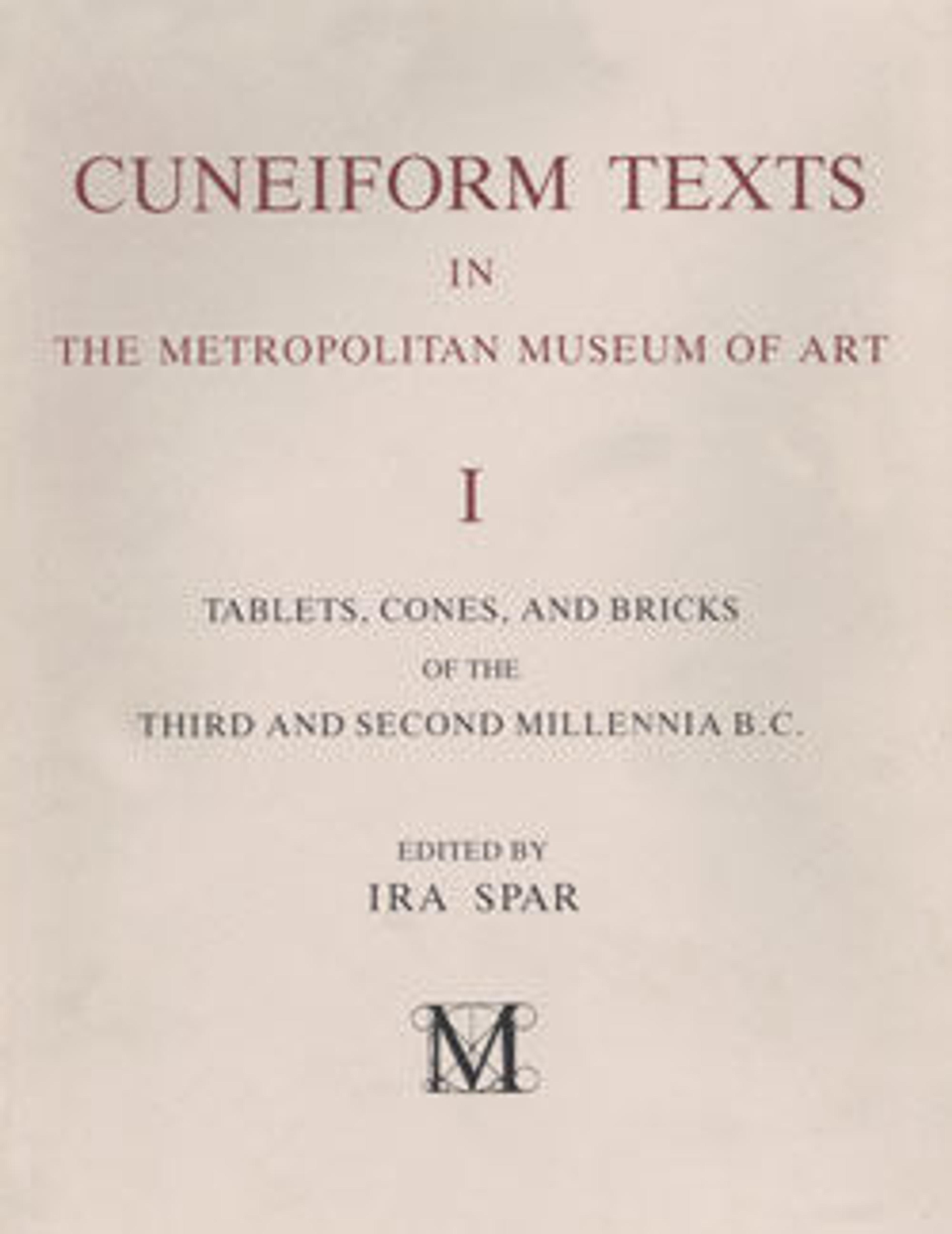Cuneiform tablet: student exercise tablet
This lenticular clay tablet was used to help scribes learn to write the Sumerian and Akkadian languages using the triangle-like cuneiform (literally, "wedge-shaped") script. To learn a word or sign, the teacher would write the form on the obverse, and the student would then repeat the exercise on the reverse. Such elementary exercises were often completed on tablets that were small and round, easily fitting into the palm of a hand.
On this tablet, the name of the deity Urash was copied six times. (Additional signs seem to be present on the reverse but are too damaged to read.) Two signs were used to write this name: the first star-like sign on the left is a sign that was used to indicate the name of a divine being. The second sign could be used to write the syllable ib or ip; here it stands for Urash, the name of a deity. Cuneiform signs were used to render both words and sounds, and a single sign could signify multiple words and/or sounds. The study of cuneiform writing, therefore, required the mastery of several hundred signs and their different meanings.
On this tablet, the name of the deity Urash was copied six times. (Additional signs seem to be present on the reverse but are too damaged to read.) Two signs were used to write this name: the first star-like sign on the left is a sign that was used to indicate the name of a divine being. The second sign could be used to write the syllable ib or ip; here it stands for Urash, the name of a deity. Cuneiform signs were used to render both words and sounds, and a single sign could signify multiple words and/or sounds. The study of cuneiform writing, therefore, required the mastery of several hundred signs and their different meanings.
Artwork Details
- Title: Cuneiform tablet: student exercise tablet
- Period: Old Babylonian
- Date: ca. 20th–16th century BCE
- Geography: Mesopotamia
- Culture: Babylonian
- Medium: Clay
- Dimensions: 7.6 x 2.9 cm (3 x 1 1/8 in.)
- Credit Line: Purchase, 1886
- Object Number: 86.11.251
- Curatorial Department: Ancient West Asian Art
More Artwork
Research Resources
The Met provides unparalleled resources for research and welcomes an international community of students and scholars. The Met's Open Access API is where creators and researchers can connect to the The Met collection. Open Access data and public domain images are available for unrestricted commercial and noncommercial use without permission or fee.
To request images under copyright and other restrictions, please use this Image Request form.
Feedback
We continue to research and examine historical and cultural context for objects in The Met collection. If you have comments or questions about this object record, please contact us using the form below. The Museum looks forward to receiving your comments.
